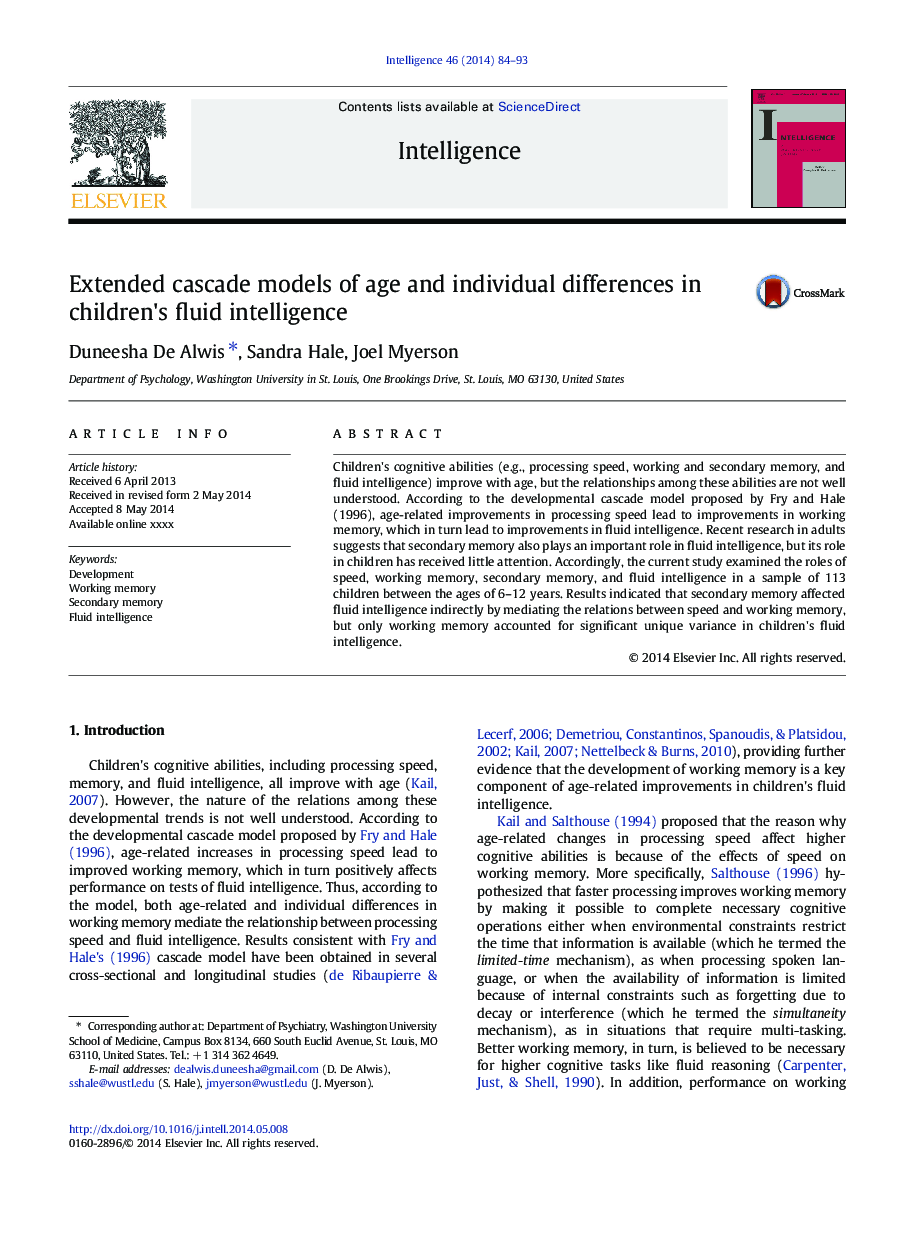| کد مقاله | کد نشریه | سال انتشار | مقاله انگلیسی | نسخه تمام متن |
|---|---|---|---|---|
| 7294273 | 1474270 | 2014 | 10 صفحه PDF | دانلود رایگان |
عنوان انگلیسی مقاله ISI
Extended cascade models of age and individual differences in children's fluid intelligence
ترجمه فارسی عنوان
مدل های آبشاری گسترده ای از اختلالات سنی و فردی در هوش سیال کودکان
دانلود مقاله + سفارش ترجمه
دانلود مقاله ISI انگلیسی
رایگان برای ایرانیان
کلمات کلیدی
توسعه، حافظه کاری، حافظه ثانویه، هوش مایع
ترجمه چکیده
توانایی های شناختی کودکان (به عنوان مثال، سرعت پردازش، حافظه کار و ثانویه و هوش مایع) با سن بهبود می یابد، اما ارتباط بین این توانایی ها به خوبی درک نمی شود. با توجه به مدل آبشار توسعه یافته پیشنهاد شده توسط فرای و هیل (1996)، پیشرفت های مربوط به سن در سرعت پردازش منجر به بهبود حافظه کاری می شود که به نوبه خود منجر به پیشرفت در هوش سیال می شود. تحقیقات اخیر در بزرگسالان نشان می دهد که حافظه ثانویه نیز نقش مهمی در هوش سیال دارد، اما نقش آن در کودکان توجه کمتری را به خود جلب کرده است. بر این اساس، مطالعه حاضر نقش سرعت، حافظه کاری، حافظه ثانویه و هوش سیال را در نمونه ای از 113 کودک بین سنین 6 تا 12 ساله مورد بررسی قرار داد. نتایج نشان داد که حافظه ثانویه به طور غیرمستقیم با میانجیگری روابط بین سرعت و حافظه کاری به طور غیرمستقیم، اما تنها حافظه کاری منجر به واریانس منحصر به فرد منحصر به فرد در هوش سیال کودکان می شود.
موضوعات مرتبط
علوم انسانی و اجتماعی
روانشناسی
روانشناسی تجربی و شناختی
چکیده انگلیسی
Children's cognitive abilities (e.g., processing speed, working and secondary memory, and fluid intelligence) improve with age, but the relationships among these abilities are not well understood. According to the developmental cascade model proposed by Fry and Hale (1996), age-related improvements in processing speed lead to improvements in working memory, which in turn lead to improvements in fluid intelligence. Recent research in adults suggests that secondary memory also plays an important role in fluid intelligence, but its role in children has received little attention. Accordingly, the current study examined the roles of speed, working memory, secondary memory, and fluid intelligence in a sample of 113 children between the ages of 6-12Â years. Results indicated that secondary memory affected fluid intelligence indirectly by mediating the relations between speed and working memory, but only working memory accounted for significant unique variance in children's fluid intelligence.
ناشر
Database: Elsevier - ScienceDirect (ساینس دایرکت)
Journal: Intelligence - Volume 46, SeptemberâOctober 2014, Pages 84-93
Journal: Intelligence - Volume 46, SeptemberâOctober 2014, Pages 84-93
نویسندگان
Duneesha De Alwis, Sandra Hale, Joel Myerson,
